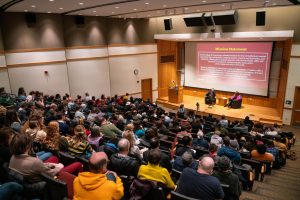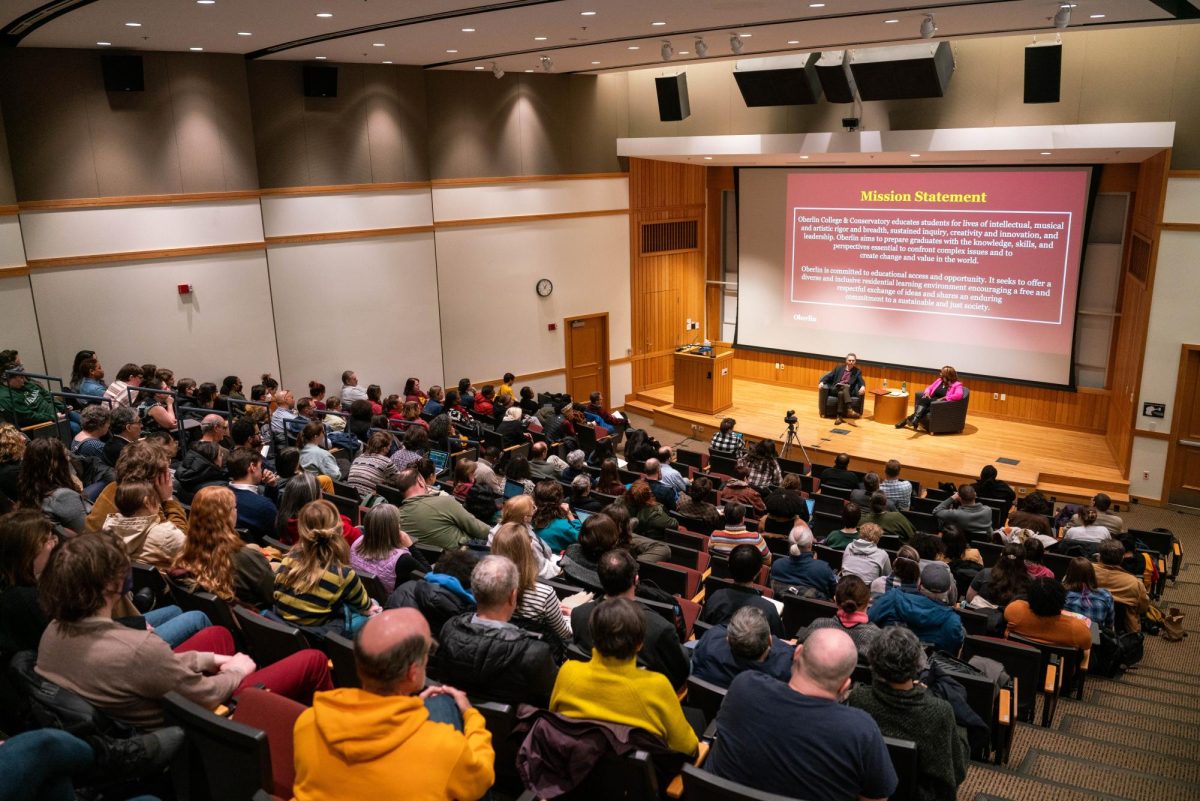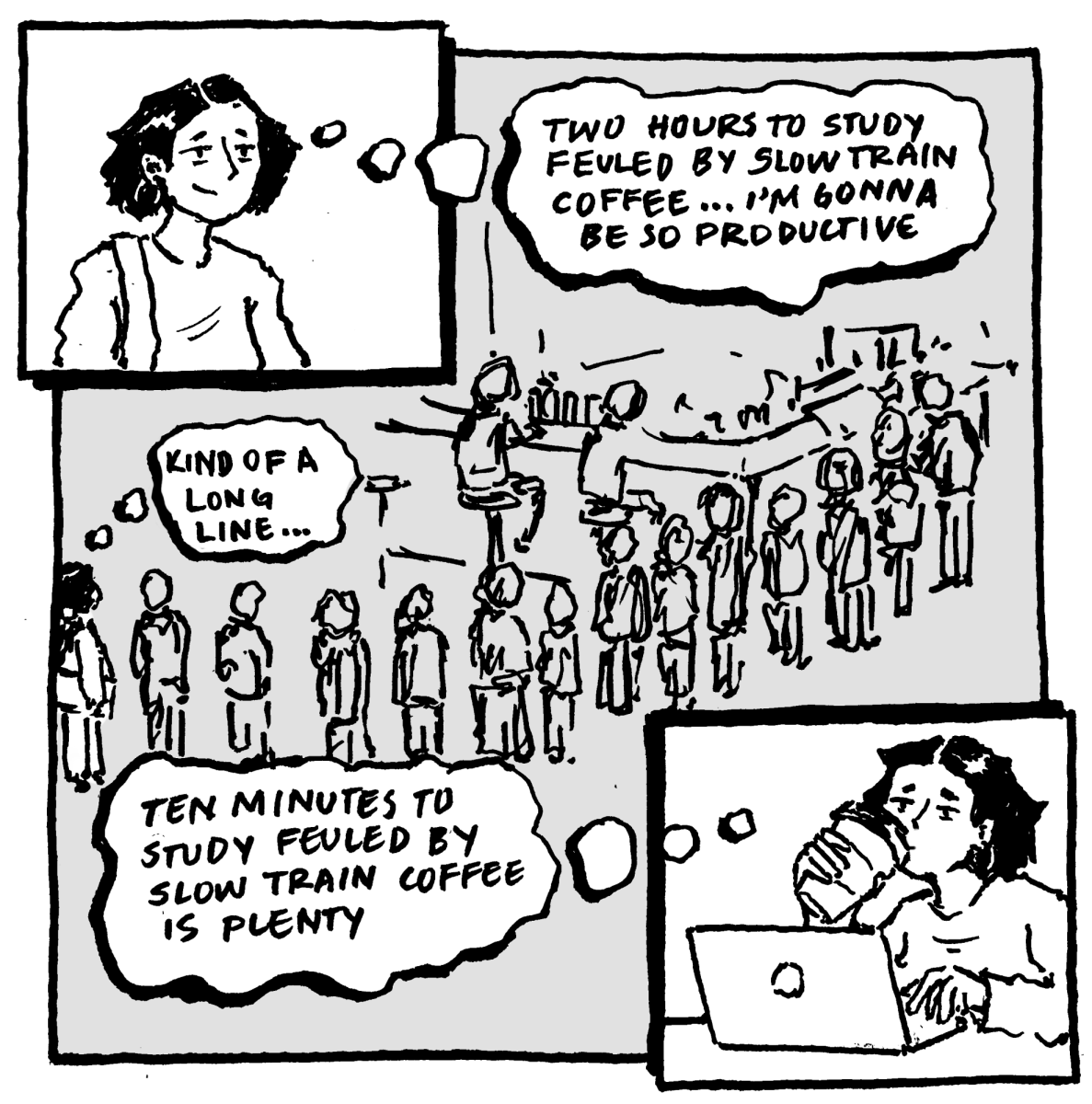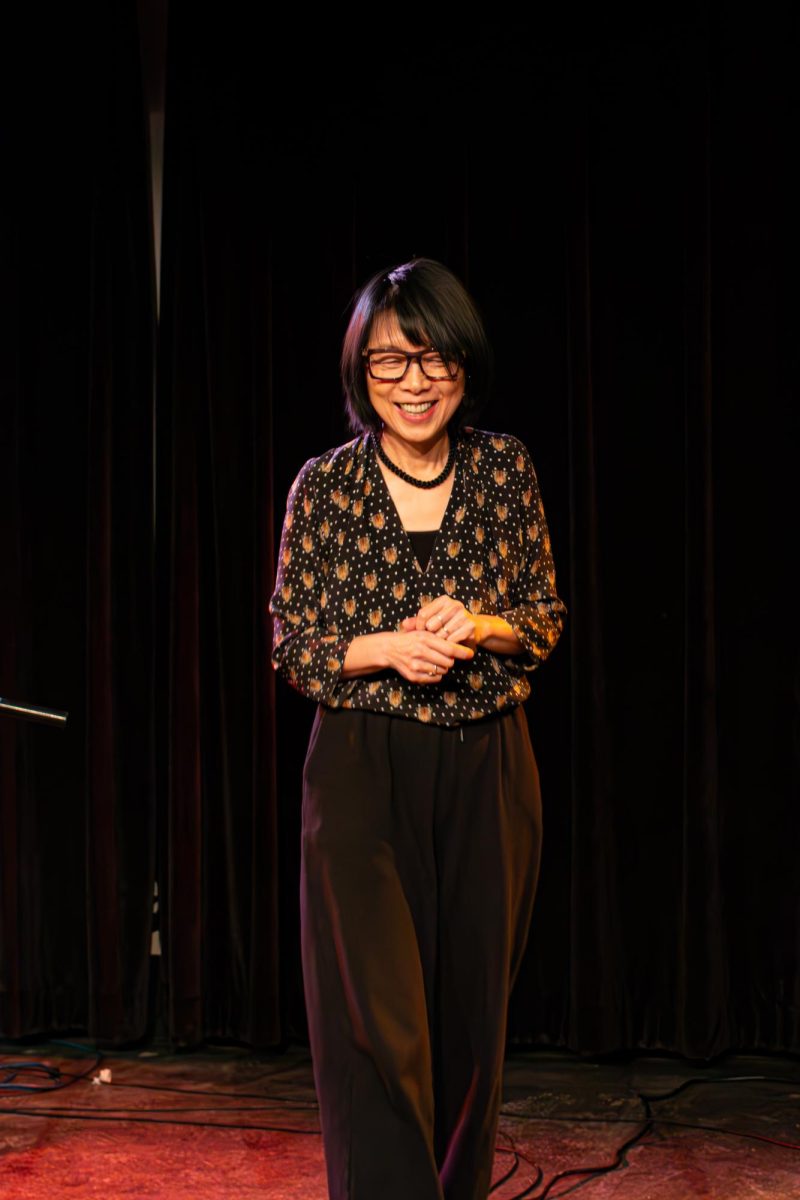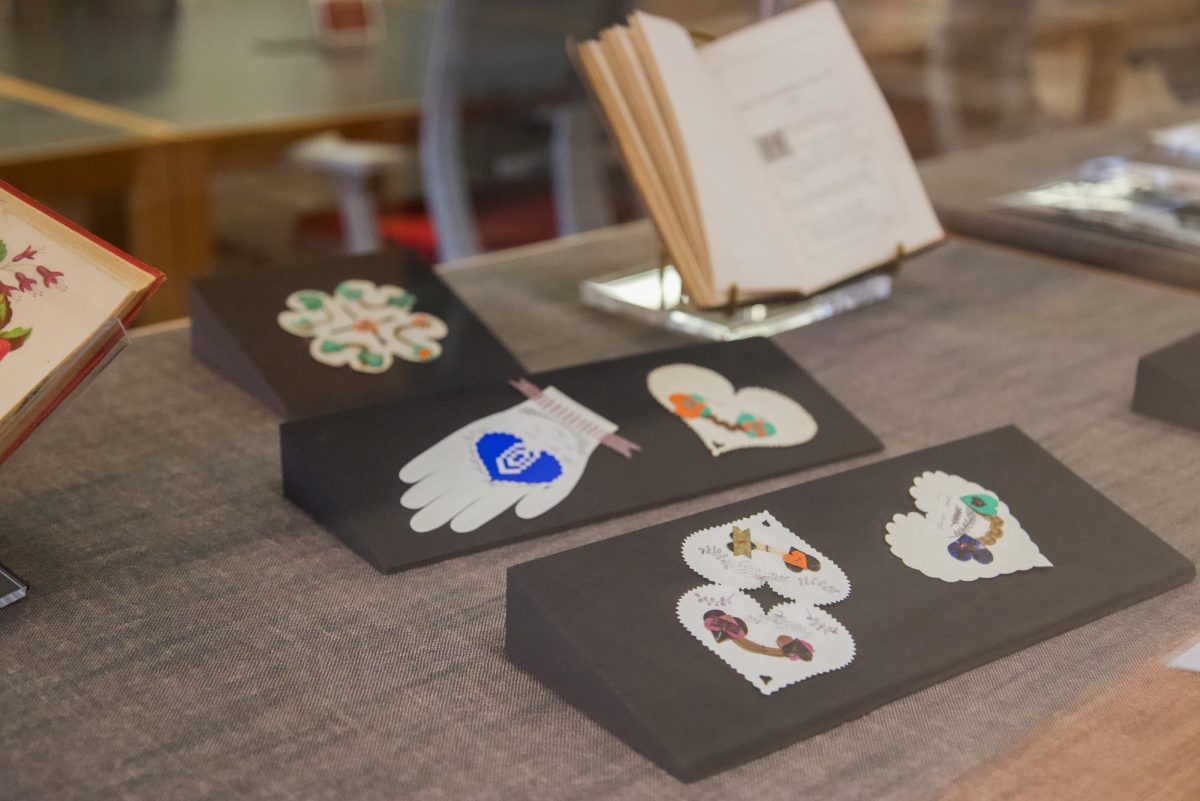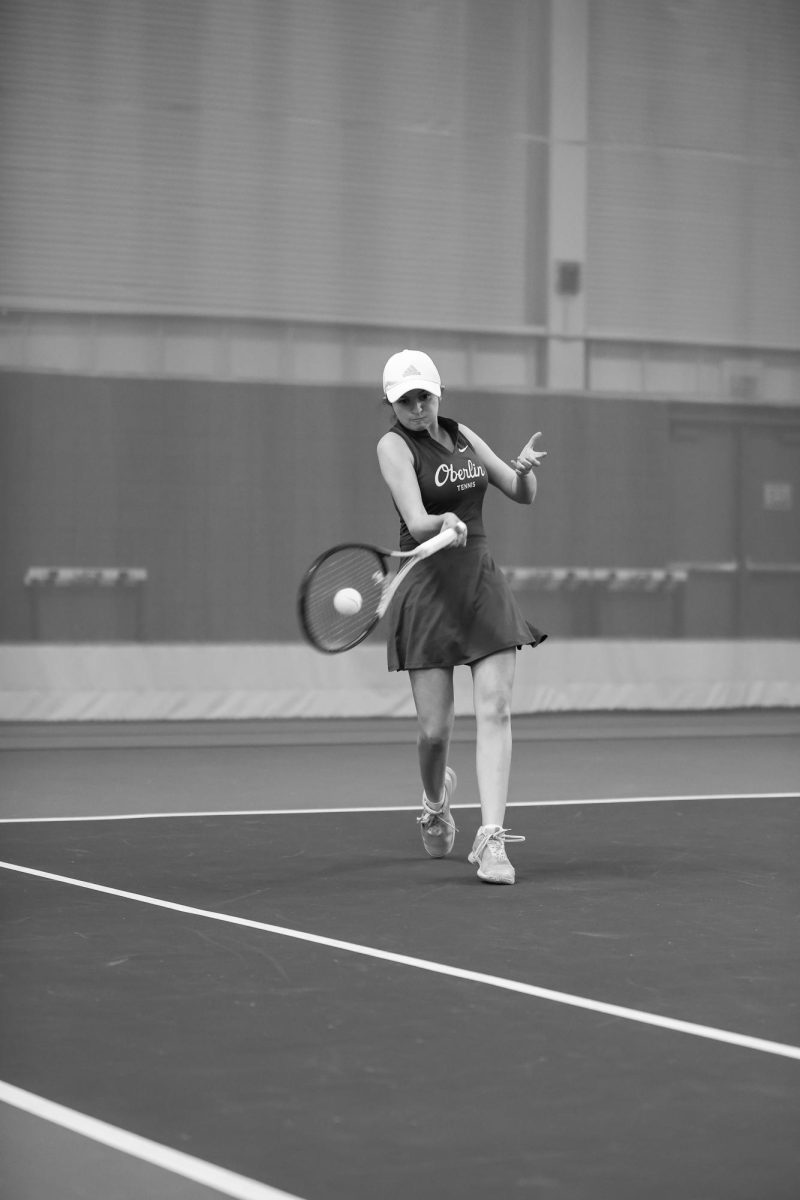A Conversation wtih William Roth
Senior Shahab Raza, a veteran of both the College’s Varsity soccer and tennis programs, gives his take on Oberlin’s athletic director.
April 13, 2012
I can think of few people in our community who would be more compelling subjects of an interview than William Roth. I have felt that way ever since my first interaction with the new athletic director, which was already one more than the sum of my interactions with the previous AD, Joe Karlgaard. It was during soccer preseason training this fall, and William Roth introduced himself to us by pointing out the intensity of the task we were collectively undertaking, and among other things, reminding us in a friendly way that we were representing more than just ourselves when wearing his Oberlin College shirts.
His shirts. That struck me as odd, and somewhat discomforting. But these choice words were, over the course of the year, accompanied by sweeping regime changes in the Athletics department. There are suddenly Ice Cream Socials, games are actually being advertised and, as we learned earlier this week, there will soon be the first-ever Obie awards, the Oberlin student athlete version of, well, the Off-Broadway OBIEs. The Athletics department is a dynamic organism, and it would be a disservice to its other components to suggest that there is only one source of this change. But it is undeniable that Mr. Roth is its face.
I was eager to get more than just a fleeting glimpse of the realm behind the new face of Oberlin athletics. It was refreshingly uncomplicated to secure the interview. And in our subsequent conversations, one of the things that really resonated with me was Mr. Roth’s insistence that his door is always open, and for anyone with an opinion worth sharing, it’s as easy as walking through it. While walking into his office was straightforward, what followed involved me explaining to a stern-looking Mr. Roth why exactly I wanted to interview him. We traipsed around the subject until I finally had to talk straight — no qualifiers, no prefaces. I don’t think I was the first person to sit in that chair, feeling eerily vulnerable and meek. I certainly won’t be the last.
It’s worth clarifying that the demands of the AD job are dominated by a lot of organizational work (as Mr. Roth put it, “keeping the trains running”): talking to alumni, donors and trustees and in general being a part of the Oberlin administration. Somewhat selfishly, I was most interested in the current Oberlin student-athletes, not former ones with money. My interviews with Roth, however, were not my assessment of his performance in the first eight months in office. Over the course of our two meetings, we spoke extensively about the identity of Oberlin student-athletes, and their relationship with their AD.
“When I was interviewed [ for the AD job], student-athletes said to me they didn’t know their [previous] athletic director. They had no idea what that person’s role was; they felt thoroughly disconnected with his role,” Roth told me. “So I guess that concern, then, was that there was a desire to be supported in a variety of ways, a desire to be acknowledged, respected and connected to someone leading the Athletics department. I think there are lots of different ways I want our athletes to feel that I am supportive of them, connected to them and encouraging of them.”
That line of thought is promising. Yet in his demeanor there is also a lingering suggestion of something — dare I say it — incompatible with the “Oberlin way.”
I was curious to know how well he knew what Oberlin students and student-athletes were about. “I don’t think there is a difference between student- athletes and other Oberlin students,” he said. Perfect qualifier.
I then asked for three adjectives that distinguish student-athletes at Oberlin from others he has encountered at some of his previous stops, which include the University of Pennsylvania and Tulane University. Some people will say that an attempt to categorize such a diverse group of people is doomed from the outset, but I found it a worthwhile question to think about myself. Mr. Roth did too.
He used the words “earnest,” “process-oriented,” and “volatile.”
“There’s … a willingness to over-extend,” Roth said. “Kids here are concerned not just with doing the right thing, but doing it the right way.”
And as to his use of “volatile,” Roth explained that he was referring to “dialogue in particular. Inside everyone,” Roth said, “is an explosive that’s ready to take off. They have an incredible energy that is ready to engage, ready to challenge, waiting for the opportunity to invite itself.”
Roth said that this desire to think and rationalize may hinder us as athletes, however. The past month has seen some amazing things happen, thanks to the efforts of athletes like first-year Chris McLaughlin, sophomore Emily King, junior Eric Knight and sophomore Molly Martorella. According to Mr. Roth, successful athletes “train and train and are intellectual, but when it comes to performance, they have the confidence in their training and let go. I think we’re still trying to break through in that.”
His descriptions suggested he views athletes not just as athletes, but as people.
“We can applaud them as an athlete but always be invested in them as a person,” he said. “The more I’m here and the more kids become comfortable with me, the more they will invite me into their worlds. It will become a more personal experience rather than a professional experience.
“The interaction with the kids is actually what makes this job fun. Every kid comes from a different background and with a different perspective, and what’s great is that kids here are not shy to express their thoughts.”
While my original impression had been that Roth’s is a ruthless regime dedicated to on-field success, this impression was ostensibly debunked in this most fascinating part of my interview.
“I think my primary role is to facilitate the education of Oberlin students. It’s not to win games. It’s not to create hoopla. It’s to further the educational experience of our kids,” said Roth.
But, for all the urgency associated with records and development of each individual team, Roth concedes to the limitations (that can also be seen as the merits) of Division III athletics.
What about the inevitable conflict between a student’s education and his team’s success? What if athletic pursuit is superseded by other curricular or cocurricular pursuits?
“My view,” said Roth, “is that the forces here actually do make you a good athlete.”
Still I think it would be futile to say that the conflict between athletics and other pursuits isn’t a hindrance. The hallmark of any successful program is its retention rate, and the incredible wealth of opportunity here results in a lot of coaches accepting that they will lose the odd player or two a season.
And despite his claims that student interactions are the best part of his job, I can envision some interactions that may not be very pleasant at all. Especially when Mr. Roth “requests” a conversation with any athlete before they quit their team. Some of it is to try and understand how to increase that retention rate, “but it also turns out be just as helpful for them when they try and explain to me the reasons behind their decision,” he said.
Is his insistence for an explanation an attempt to dissuade, or, more gravely, does it reflect distrust of the athlete’s decision?
“No,” said Roth. “That is a bias that you have brought with that question.”
That conversation is not the only instance of an unpleasant interaction a student-athlete could have in that office. It is now customary for student-athletes who find themselves on Safety and Security reports to have to explain their actions to the AD. According to Roth, this is not something new, and the explanation is something we’ve heard before: As student-athletes, we represent the Athletics department, and we should be aware of the consequences of not adhering to the prescribed moral code. Being an athlete is a privilege, but it comes with extra responsibility. In practice, many such conversations involve students being berated for getting drunk on Saturday night.
I think the jury is still out on the merits of a higher set of standards for athletes. Mr. Roth reprimanded me for having a heavy bias when I suggested it might be an Orwellian practice; perhaps I am mistaken in losing sight of the value of support networks in student social life.
It’s fitting that the one place where William Roth is most visible is at games, where he cuts a lone figure purposely separate from everyone else. It’s a gesture of solidarity, sure, but it also shows he doesn’t shy away from the limelight. It’s a personification of what we at Oberlin know pretty well: fearlessness. He watches with the same intensity in every aspect of his work, an intensity that reflects a deep understanding of the sport and empathy with the plight of those who along with him are representing this institution.
He scoffed at my suggestion that he would be better advised to embrace the role of a fan and sit on the bleachers, dismissing the idea as largely unremarkable when there were so many other more significant things to talk about.
“I’m not here to win a popularity contest,” said Roth, “and I stand where I like to stand.”
Perhaps so, but that dismissal would suggest a disregard for the feelings of the same student-athletes toward whom he exhibits such fierce loyalty. It may take away from the most compelling aspect of William Roth, highlighted by the simple mantra: “No success can be achieved without a deep, personal investment.”
In all his endeavors as AD, there is no doubting the presence of that.



